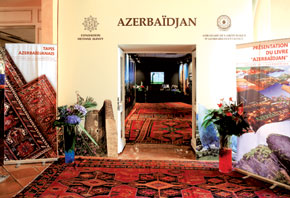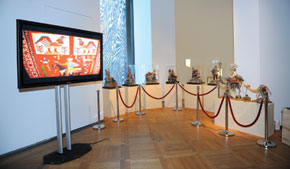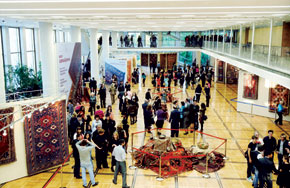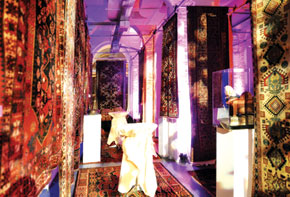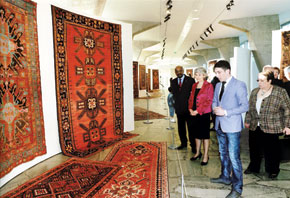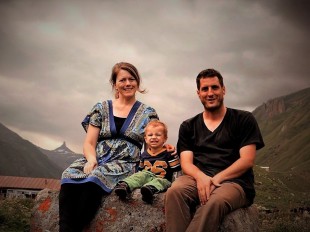Pages 8-14
By Muhammad Hasanli
Azerbaijan actually achieved independence twice during the 20th century. The first time was on 28 May 1918, when the National Council of Azerbaijan adopted a Declaration of Independence. The Azerbaijan Democratic Republic (ADR) established then existed for 23 months. On 27 April 1920, Red Army troops crossed the border and imposed Soviet authority.
The country existed within the USSR for 70 years. And, finally, the moment came on 30 August 1991 at an extraordinary session of the Supreme Soviet of the Azerbaijan Republic: a declaration to restore state independence was adopted.
20 years on
On 18 October 1991, the Supreme Soviet adopted the Constitutional Act on the State Independence of Azerbaijan. The foundations for the state, political and economic organization of the Azerbaijan Republic, successor to the ADR, had been laid. Our republic set out on a hard road, beset by obstacles. Social and political problems inherited from the Soviet regime, a struggle against separatism and military aggression from Armenia, sharp confrontations over domestic policy and threats of coup d´état all endangered the young republic.
20 years have passed since then, 20 years of development in all areas of life. Azerbaijan is becoming better known in the world and has been victorious in various international arenas: in sports, music, even in cuisine.
In the last 8 years, 900,000 jobs and 2,000 schools have been created and poverty levels have fallen from 49 per cent to 9 per cent.
The celebrations begin
A range of events were held to celebrate the 20th anniversary of independence, many of the most significant being organised by the Heydar Aliyev Foundation and its president, Goodwill Ambassador of UNESCO and ISESCO Mehriban Aliyeva, with the assistance of the embassies in the various countries.
The celebrations began with an official ceremony in Paris on 17 February. Frédéric Mitterrand, France’s Minister of Culture, offered congratulations on the celebration of the re-establishment of Azerbaijani independence. He said that the works of Azerbaijani composers were much loved and hailed Azerbaijan as the homeland of ashug and mugham music.
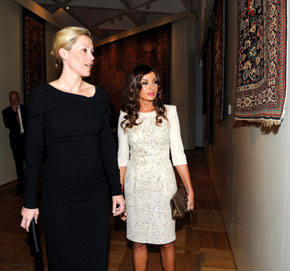 The first ladies of Azerbaijan and Germany, Mehriban Aliyeva and Bettina Wulff visit the exhibition. Berlin. September 2011
The first ladies of Azerbaijan and Germany, Mehriban Aliyeva and Bettina Wulff visit the exhibition. Berlin. September 2011
In her speech, Mehriban Aliyeva said there had been much talk about Azerbaijan as a young country and about the Land of Fire and its long history and she described the struggles waged in different historical periods for Azerbaijan, a land situated at the junction of East and West. Notwithstanding the struggle, the Azerbaijani people had protected and preserved their history, language, religion, culture and national identity.
The First Lady also focused on the merits of the ADR – the first democratic republic in the East – the first school for Muslim girls in the East had been established, the first opera and the first ballet had been composed, women had gained the right to vote. She described the achievements of modern Azerbaijan over the last 20 years. It was the most rapidly developing country in the region. Its economy constituted 75 per cent of the region’s finances. The region’s major projects were undertaken on Azerbaijani initiative.
A cultural feast
Masters of the arts then delivered a fascinating programme of events. The Gara Garayev Azerbaijan State Chamber Orchestra under conductor Teymur Goychayev played the overture to Uzeyir Hajibeyov’s opera Koroglu. Shirzad Fataliyev’s balaban aired the melody Sen gelmez oldun (You did not come) to the orchestra’s accompaniment. The overture to Hajibeyov’s musical comedy Arshin Mal Alan; a dance composed by Gara Garayev; Isfar Sarabski’s jazz number Novruz; as well as Karabakh Shikestasi sung by Mirpasha Shukurov, acquainted the audience with the magical world of Azerbaijani music. Gara Garayev’s Waltz, Niyazi’s Arzu, the folk song Kichelere su sepmishem (I sprinkle water on the street) and Azerbaijani Rhythms were also presented. The finale was a performance of Fikret Amirov’s ballet Arabian Nights.
The concert programme surely demonstrated to a western audience the richness of a culture preserved over the centuries.
Following the concert, the audience were able to browse around an exhibition, with Azerbaijani carpets very much the focus. The Karabakh carpets, with their particular ornamentation and colouring, were a special delight for visitors.
The copperware and crafts on show displayed the range and skill of our people’s handicrafts.
The French-language version of the book Azerbaijan was presented at the exhibition. The book amply illustrates the culture, history, people, regions and many other aspects of our country. The event ended with a presentation of Azerbaijani cuisine.
Modernist too
Some two months later, on 18 April, Days of Azerbaijani Culture were held in Paris. Mehriban Aliyeva arrived at the Hotel d`Evreux where the exhibition Modern Works of the Land of Fire - Azerbaijan was mounted, displaying 33 works by 18 Azerbaijani modern artists, including Afshar Murad, Altay Sadigzadeh, Tahir Salahov, Toghrul Narimanbeyov, Fuad Salayev, Museyib Amirov, Bahram Khalilov and others.
The paintings in the exhibition delivered the unique colours of Azerbaijan’s capital, situated on the shore of the Caspian Sea to the western viewer. Not all the paintings were realist, however. The artists had employed a variety of techniques and colour to express the beauty of their country in pure translations of emotion. The exhibition itself was evidence of the development of art underway in Azerbaijan.
On 19 April, within the Days of Azerbaijani Culture in Paris, Mehriban Aliyeva met Irina Bokova, the Director General of UNESCO.
After the meeting, an exhibition of Azerbaijani carpets was opened which accentuated the antiquity of the development of carpet weaving in Azerbaijan, now the subject of extensive studies. These carpets adorn the world’s palaces and museums, perhaps the best known being the Sheikh Safi carpet held in London’s Victoria and Albert Museum.
Special attention was focused on the carpets reflecting the works of People’s Artist Tahir Salahov. It was very interesting to see already familiar works in a new form.
Following the official ceremony, there was a concert performance by young practitioners.
From Kremlin to Saint-Tropez
A month later, on 18 May, an Evening of Azerbaijan was held in the Kremlin, hosted jointly by the first ladies of Azerbaijan and Russia.
An exhibition of Azerbaijani carpets was presented in the Great Kremlin Palace in which visitors could contemplate examples from all the carpet weaving schools of the various regions – Karabakh, Nakhchivan, Guba, Baku and Shirvan among others. On the lower floor there was a photographic exhibition. Many of the pictures were from the book Azerbaijan which had also been published in the Russian language.
From the stage of the Kremlin Palace, president of the Heydar Aliyev Foundation, Mehriban Aliyeva said that although 20 years was a short period in the life of a country, much work had been done. She also thanked Russians for their votes in the Eurovision song contest.
After the speeches, a concert began. Shirzad Fataliyev played Sen gelmez oldun and the works of the great Uzeyir Hajibeyov aroused great interest and delight in the audience, no less than in Paris.
The evening was rounded off with a demonstration of Azerbaijani cuisine.
The next event was an exhibition, The Cultural wealth of Azerbaijan, from 16-20 July, in Saint-Tropez, in one of the resort’s most famous hotels, the Chateau de la Messardiere, as part of the Ramatuelle Festival of Classical Music. Traditional musical instruments, copperware, national costumes, carpets, kilims and photographs were all on display. The exhibition was opened by Anar Alekberov, executive director of the Heydar Aliyev Foundation. In his speech he highlighted the importance of popularising the culture and history of Azerbaijan.
A short concert followed, with performances by jazz pianist Emil Afrasiyab, a prize winner at the Montreux jazz festival and Honoured Artist Mirjavad Jafarov on tar. The concert was a fine synthesis of traditional and jazz music.
Berlin benefits
On 29 September, a similar programme was organised in Berlin. Firstly, Mehriban Aliyeva went to Germany’s Museum of History, where she met Bettina Wulff, First Lady of Germany. Mrs. Aliyeva expressed her gratitude to Frau Wulff for the assistance provided in organising the event and emphasized its great importance. The head of the Heydar Aliyev Foundation presented a cheque for 50,000 euro to the administration of Berlin castle in support of their charity campaign to restore the castle burned and destroyed during World War II.
After their meeting, the First Ladies visited the exhibition, at which the German-language version of the book Azerbaijan was presented. Other books, booklets and publications printed by the Heydar Aliyev Foundation were also presented.
Azerbaijani carpets and copperware were also displayed in the exhibition. The carpets were arranged geographically, according to the carpet weaving school to which they belonged and to the complexity of ornamentation and technique.
The official ceremony followed the exhibition. The event was opened by the celebrated German television anchorman, Jens Riva, who talked about Azerbaijan and its cultural values. He also reminded participants that the next Eurovision Song Contest would be in Azerbaijan.
Bettina Wulff underlined the high level of relations between the two countries. She mentioned the holding of Days of Azerbaijan in Germany in 2008 and the Week of Germany in Azerbaijan in 2010.
The First Lady of Azerbaijan stated in her speech that the main purpose of the event dedicated to the 20th anniversary of Azerbaijan’s independence was to communicate to the international community the progress made by the country, its current position and its successes. Mrs. Aliyeva emphasized that the European Union now recognized Azerbaijan as a strategic partner in the search for energy security. In its turn, Azerbaijan was ready to make its contribution to Europe’s supplies of oil and gas.
A concert followed, in the History Museum. People’s Artist Teymur Goychayev conducted. After the concert, dishes from Azerbaijani cuisine were offered to guests.
The international languages of music and delicious homemade food achieved the aim of helping western guests to appreciate Azerbaijan and its culture.
On the following day, the president of the Heydar Aliyev Foundation visited the Berlin-Baku-Berlin exhibition hall. This gallery is a branch of Baku’s Qiz Qalasi (Maiden Tower) art gallery. Mehriban Aliyeva met the head of the gallery, artist Ibrahim Ehrari. The gallery has functioned in Germany since 2007 and has held exhibitions by 62 Azerbaijani and 46 German artists in that period.
Mrs. Aliyeva went next to the Azerbaijan embassy in Germany, where she met Ambassador Parviz Shahbazov, Eva-Maria Auch, head of the Department of the History of Azerbaijan at Humboldt University, and Honoured Artist of Azerbaijan Afshar Heybatov, now resident in Germany. The artist presented the First Lady with her portrait and Azerbaijan – Eastern World, an album of his work.
Vatican rendezvous
Completing the series of celebrations, the president of the Heydar Aliyev Foundation visited Italy. On 28 November, Mehriban Aliyeva met Jean Louis Touran, President of the Pontifical Council for Interreligious Dialogue.
The next day, the First Lady met Cardinal Tarcisio Bertone, Secretary of State to His Holiness the Pope.
On the same day, an event dedicated to Azerbaijan’s re-establishment of independence was held in the Vatican. Before the opening ceremony, Mrs. Aliyeva met Cardinal Janfranko Ravazi, the Vatican’s Minister of Culture. He confirmed the importance of the project being conducted by Azerbaijan in the Apostolic library in the Vatican. So far, 15 of the library’s 40 manuscripts concerning Azerbaijan had been restored.
Following the meeting, the First Lady and the Minister of Culture reviewed photographs and videos reflecting Baku past and present and cultural sites in Azerbaijan, as well as the exhibition.
There were displays of carpets, copperware and other artefacts and also works from the Maiden Tower festival, embodying the responses of international artists to the symbol of Baku.
The Italian-language version of the book Azerbaijan was presented, along with booklets and photos reflecting aspects of the cultural life of Azerbaijan.
A concert and sampling of traditional cuisine also impressed guests of the event.
A similar but larger-scale exhibition was held in Rome’s opera theatre on 2 December.
The wonder of Azerbaijani culture can delight all who encounter it. All that is necessary is the least acquaintance. The harmonious, if at first puzzling, world of mugham and the colourful poetry of the ashuqs can evoke a trance-like state, similar to the effect of Tibetan mandalas; Karabakh carpets and the cuisine can truly enslave.
The Foundation works continually to take to the world the pearls of culture bred by our people, to enlighten on the mystery called Azerbaijan and to expand the country’s cultural reach.
The Heydar Aliyev Foundation’s work has generated sincere interest and admiration from the west for the country’s culture.
Presenting the distinctive culture of Azerbaijan in a range of countries has achieved its aim to convey the ‘fragrance’ of the country and inspire recipients to learn more about this unexplored world.
By Muhammad Hasanli
Azerbaijan actually achieved independence twice during the 20th century. The first time was on 28 May 1918, when the National Council of Azerbaijan adopted a Declaration of Independence. The Azerbaijan Democratic Republic (ADR) established then existed for 23 months. On 27 April 1920, Red Army troops crossed the border and imposed Soviet authority.
The country existed within the USSR for 70 years. And, finally, the moment came on 30 August 1991 at an extraordinary session of the Supreme Soviet of the Azerbaijan Republic: a declaration to restore state independence was adopted.
20 years on
On 18 October 1991, the Supreme Soviet adopted the Constitutional Act on the State Independence of Azerbaijan. The foundations for the state, political and economic organization of the Azerbaijan Republic, successor to the ADR, had been laid. Our republic set out on a hard road, beset by obstacles. Social and political problems inherited from the Soviet regime, a struggle against separatism and military aggression from Armenia, sharp confrontations over domestic policy and threats of coup d´état all endangered the young republic.
20 years have passed since then, 20 years of development in all areas of life. Azerbaijan is becoming better known in the world and has been victorious in various international arenas: in sports, music, even in cuisine.
In the last 8 years, 900,000 jobs and 2,000 schools have been created and poverty levels have fallen from 49 per cent to 9 per cent.
The celebrations begin
A range of events were held to celebrate the 20th anniversary of independence, many of the most significant being organised by the Heydar Aliyev Foundation and its president, Goodwill Ambassador of UNESCO and ISESCO Mehriban Aliyeva, with the assistance of the embassies in the various countries.
The celebrations began with an official ceremony in Paris on 17 February. Frédéric Mitterrand, France’s Minister of Culture, offered congratulations on the celebration of the re-establishment of Azerbaijani independence. He said that the works of Azerbaijani composers were much loved and hailed Azerbaijan as the homeland of ashug and mugham music.
 The first ladies of Azerbaijan and Germany, Mehriban Aliyeva and Bettina Wulff visit the exhibition. Berlin. September 2011
The first ladies of Azerbaijan and Germany, Mehriban Aliyeva and Bettina Wulff visit the exhibition. Berlin. September 2011 In her speech, Mehriban Aliyeva said there had been much talk about Azerbaijan as a young country and about the Land of Fire and its long history and she described the struggles waged in different historical periods for Azerbaijan, a land situated at the junction of East and West. Notwithstanding the struggle, the Azerbaijani people had protected and preserved their history, language, religion, culture and national identity.
The First Lady also focused on the merits of the ADR – the first democratic republic in the East – the first school for Muslim girls in the East had been established, the first opera and the first ballet had been composed, women had gained the right to vote. She described the achievements of modern Azerbaijan over the last 20 years. It was the most rapidly developing country in the region. Its economy constituted 75 per cent of the region’s finances. The region’s major projects were undertaken on Azerbaijani initiative.
A cultural feast
Masters of the arts then delivered a fascinating programme of events. The Gara Garayev Azerbaijan State Chamber Orchestra under conductor Teymur Goychayev played the overture to Uzeyir Hajibeyov’s opera Koroglu. Shirzad Fataliyev’s balaban aired the melody Sen gelmez oldun (You did not come) to the orchestra’s accompaniment. The overture to Hajibeyov’s musical comedy Arshin Mal Alan; a dance composed by Gara Garayev; Isfar Sarabski’s jazz number Novruz; as well as Karabakh Shikestasi sung by Mirpasha Shukurov, acquainted the audience with the magical world of Azerbaijani music. Gara Garayev’s Waltz, Niyazi’s Arzu, the folk song Kichelere su sepmishem (I sprinkle water on the street) and Azerbaijani Rhythms were also presented. The finale was a performance of Fikret Amirov’s ballet Arabian Nights.
The concert programme surely demonstrated to a western audience the richness of a culture preserved over the centuries.
Following the concert, the audience were able to browse around an exhibition, with Azerbaijani carpets very much the focus. The Karabakh carpets, with their particular ornamentation and colouring, were a special delight for visitors.
The copperware and crafts on show displayed the range and skill of our people’s handicrafts.
The French-language version of the book Azerbaijan was presented at the exhibition. The book amply illustrates the culture, history, people, regions and many other aspects of our country. The event ended with a presentation of Azerbaijani cuisine.
Modernist too
Some two months later, on 18 April, Days of Azerbaijani Culture were held in Paris. Mehriban Aliyeva arrived at the Hotel d`Evreux where the exhibition Modern Works of the Land of Fire - Azerbaijan was mounted, displaying 33 works by 18 Azerbaijani modern artists, including Afshar Murad, Altay Sadigzadeh, Tahir Salahov, Toghrul Narimanbeyov, Fuad Salayev, Museyib Amirov, Bahram Khalilov and others.
The paintings in the exhibition delivered the unique colours of Azerbaijan’s capital, situated on the shore of the Caspian Sea to the western viewer. Not all the paintings were realist, however. The artists had employed a variety of techniques and colour to express the beauty of their country in pure translations of emotion. The exhibition itself was evidence of the development of art underway in Azerbaijan.
On 19 April, within the Days of Azerbaijani Culture in Paris, Mehriban Aliyeva met Irina Bokova, the Director General of UNESCO.
After the meeting, an exhibition of Azerbaijani carpets was opened which accentuated the antiquity of the development of carpet weaving in Azerbaijan, now the subject of extensive studies. These carpets adorn the world’s palaces and museums, perhaps the best known being the Sheikh Safi carpet held in London’s Victoria and Albert Museum.
Special attention was focused on the carpets reflecting the works of People’s Artist Tahir Salahov. It was very interesting to see already familiar works in a new form.
Following the official ceremony, there was a concert performance by young practitioners.
From Kremlin to Saint-Tropez
A month later, on 18 May, an Evening of Azerbaijan was held in the Kremlin, hosted jointly by the first ladies of Azerbaijan and Russia.
An exhibition of Azerbaijani carpets was presented in the Great Kremlin Palace in which visitors could contemplate examples from all the carpet weaving schools of the various regions – Karabakh, Nakhchivan, Guba, Baku and Shirvan among others. On the lower floor there was a photographic exhibition. Many of the pictures were from the book Azerbaijan which had also been published in the Russian language.
From the stage of the Kremlin Palace, president of the Heydar Aliyev Foundation, Mehriban Aliyeva said that although 20 years was a short period in the life of a country, much work had been done. She also thanked Russians for their votes in the Eurovision song contest.
After the speeches, a concert began. Shirzad Fataliyev played Sen gelmez oldun and the works of the great Uzeyir Hajibeyov aroused great interest and delight in the audience, no less than in Paris.
The evening was rounded off with a demonstration of Azerbaijani cuisine.
The next event was an exhibition, The Cultural wealth of Azerbaijan, from 16-20 July, in Saint-Tropez, in one of the resort’s most famous hotels, the Chateau de la Messardiere, as part of the Ramatuelle Festival of Classical Music. Traditional musical instruments, copperware, national costumes, carpets, kilims and photographs were all on display. The exhibition was opened by Anar Alekberov, executive director of the Heydar Aliyev Foundation. In his speech he highlighted the importance of popularising the culture and history of Azerbaijan.
A short concert followed, with performances by jazz pianist Emil Afrasiyab, a prize winner at the Montreux jazz festival and Honoured Artist Mirjavad Jafarov on tar. The concert was a fine synthesis of traditional and jazz music.
Berlin benefits
On 29 September, a similar programme was organised in Berlin. Firstly, Mehriban Aliyeva went to Germany’s Museum of History, where she met Bettina Wulff, First Lady of Germany. Mrs. Aliyeva expressed her gratitude to Frau Wulff for the assistance provided in organising the event and emphasized its great importance. The head of the Heydar Aliyev Foundation presented a cheque for 50,000 euro to the administration of Berlin castle in support of their charity campaign to restore the castle burned and destroyed during World War II.
After their meeting, the First Ladies visited the exhibition, at which the German-language version of the book Azerbaijan was presented. Other books, booklets and publications printed by the Heydar Aliyev Foundation were also presented.
Azerbaijani carpets and copperware were also displayed in the exhibition. The carpets were arranged geographically, according to the carpet weaving school to which they belonged and to the complexity of ornamentation and technique.
The official ceremony followed the exhibition. The event was opened by the celebrated German television anchorman, Jens Riva, who talked about Azerbaijan and its cultural values. He also reminded participants that the next Eurovision Song Contest would be in Azerbaijan.
Bettina Wulff underlined the high level of relations between the two countries. She mentioned the holding of Days of Azerbaijan in Germany in 2008 and the Week of Germany in Azerbaijan in 2010.
The First Lady of Azerbaijan stated in her speech that the main purpose of the event dedicated to the 20th anniversary of Azerbaijan’s independence was to communicate to the international community the progress made by the country, its current position and its successes. Mrs. Aliyeva emphasized that the European Union now recognized Azerbaijan as a strategic partner in the search for energy security. In its turn, Azerbaijan was ready to make its contribution to Europe’s supplies of oil and gas.
A concert followed, in the History Museum. People’s Artist Teymur Goychayev conducted. After the concert, dishes from Azerbaijani cuisine were offered to guests.
The international languages of music and delicious homemade food achieved the aim of helping western guests to appreciate Azerbaijan and its culture.
On the following day, the president of the Heydar Aliyev Foundation visited the Berlin-Baku-Berlin exhibition hall. This gallery is a branch of Baku’s Qiz Qalasi (Maiden Tower) art gallery. Mehriban Aliyeva met the head of the gallery, artist Ibrahim Ehrari. The gallery has functioned in Germany since 2007 and has held exhibitions by 62 Azerbaijani and 46 German artists in that period.
Mrs. Aliyeva went next to the Azerbaijan embassy in Germany, where she met Ambassador Parviz Shahbazov, Eva-Maria Auch, head of the Department of the History of Azerbaijan at Humboldt University, and Honoured Artist of Azerbaijan Afshar Heybatov, now resident in Germany. The artist presented the First Lady with her portrait and Azerbaijan – Eastern World, an album of his work.
Vatican rendezvous
Completing the series of celebrations, the president of the Heydar Aliyev Foundation visited Italy. On 28 November, Mehriban Aliyeva met Jean Louis Touran, President of the Pontifical Council for Interreligious Dialogue.
The next day, the First Lady met Cardinal Tarcisio Bertone, Secretary of State to His Holiness the Pope.
On the same day, an event dedicated to Azerbaijan’s re-establishment of independence was held in the Vatican. Before the opening ceremony, Mrs. Aliyeva met Cardinal Janfranko Ravazi, the Vatican’s Minister of Culture. He confirmed the importance of the project being conducted by Azerbaijan in the Apostolic library in the Vatican. So far, 15 of the library’s 40 manuscripts concerning Azerbaijan had been restored.
Following the meeting, the First Lady and the Minister of Culture reviewed photographs and videos reflecting Baku past and present and cultural sites in Azerbaijan, as well as the exhibition.
There were displays of carpets, copperware and other artefacts and also works from the Maiden Tower festival, embodying the responses of international artists to the symbol of Baku.
The Italian-language version of the book Azerbaijan was presented, along with booklets and photos reflecting aspects of the cultural life of Azerbaijan.
A concert and sampling of traditional cuisine also impressed guests of the event.
A similar but larger-scale exhibition was held in Rome’s opera theatre on 2 December.
The wonder of Azerbaijani culture can delight all who encounter it. All that is necessary is the least acquaintance. The harmonious, if at first puzzling, world of mugham and the colourful poetry of the ashuqs can evoke a trance-like state, similar to the effect of Tibetan mandalas; Karabakh carpets and the cuisine can truly enslave.
The Foundation works continually to take to the world the pearls of culture bred by our people, to enlighten on the mystery called Azerbaijan and to expand the country’s cultural reach.
The Heydar Aliyev Foundation’s work has generated sincere interest and admiration from the west for the country’s culture.
Presenting the distinctive culture of Azerbaijan in a range of countries has achieved its aim to convey the ‘fragrance’ of the country and inspire recipients to learn more about this unexplored world.
